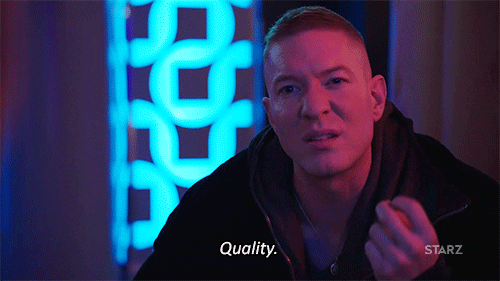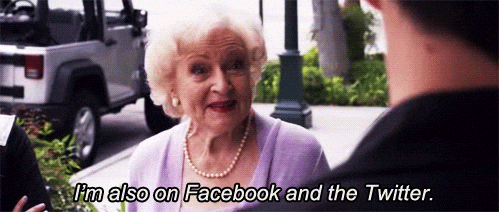How Digital PR is Redefining Brand Visibility in 2025
In 30 seconds
Once upon a time, you could have been forgiven for thinking PR was a dying artform. After all, news media doesn't have the reach it once did. Right?
Wrong. Digital PR is the centre of brand visibility in 2025. Not least because earned mentions in authoritative media is what drives brand recommendations in AI tools. But also because the changing landscape of social media and SEO necessitates Digital PR-informed tactics to get ahead.
If you want to stay ahead and ensure your key messages are shared across the right touchpoints, read on: we're dissecting how Digital PR is a key driver for success now and into the future.
The Digital PR landscape has undergone a seismic shift. What was once primarily about securing backlinks and media coverage has evolved into something far more strategic and essential for brand success. As we navigate 2025, Digital PR is no longer just about supporting traditional marketing efforts: it's becoming the cornerstone of how brands get discovered, trusted, and recommended across an entirely transformed digital media ecosystem.
The changes extend far beyond AI platforms, though their influence is undeniable. From TikTok users going viral by reacting to branded content, to Instagram becoming searchable by Google – the touchpoints where brand perception is shaped have multiplied and morphed exponentially.
Digital PR is no longer a nice-to-have tactical addition to marketing campaigns: it's the key deciding factor of how your brand is accessed and interpreted. But if you don't believe us, the proof is in the pudding (and data). In this article, we'll explain how.
Let's get into it.
The AI revolution has transformed brand discovery
Recent analysis of the world's 100 biggest companies shows that 61% of AI responses about corporate reputation now come from editorial media. When those queries focus specifically on trust, this figure jumps to 65%. For value perceptions, it reaches 72%.
This shift represents a fundamental change in how brands are evaluated and recommended. Earned media - the home turf of Digital PR - has become the primary driver of what influences LLMs (large language models), meaning this shapes what AI platforms say about brands.
Consider a query about accounting software recommendations, for instance. If you asked ChatGPT or Claude, platforms like Xero and QuickBooks would appear - not primarily because of their SEO efforts, but moreso because they've been consistently mentioned in trusted roundups, reviews, and other editorial content in trusted news and media sites.
What we've established is, machine learning models process and prioritise information from authoritative sources to generate contextually relevant responses - which means you're going to need to double down on your relationship building with journalists to help them, and therefore AI, recommend your brand.
Understanding what influences LLMs
Here's the more technical bit - but hang tight, it'll make sense when we're done.
Large language models essentially operate through complex "neural networks" that process natural language using something known as "transformer architecture". Think of this like a big map. These AI systems then undergo a training process that involves analysing crazily large datasets of textual data, including traditional media coverage and digital content. Think of this like learning map-reading skills by walking around and observing the items you find along new routes (flashbacks from Duke of Edinburgh Award ordinance survey map strugges et al).
The machine learning models learn to generate text by identifying patterns in this training data. This means that the quality and consistency of brand mentions across multiple layers of content is crucial for brand visibility.
For PR professionals, it's important to understand that these AI tools don't just perform tasks in isolation. That training data is great, but it's just a moment in time. The map is always updating.
AI tools are still constantly processing user inputs and generating content. Plus, they can now increasingly pull from the web to add to their data sets. This means that every piece of earned media also shapes how these systems understand and represent brands.
The implications for the PR industry are profound. What was once about reaching human audiences through traditional PR methods now extends to influencing the machine learning algorithms that increasingly dictate brand discovery.
It's a critical part of modern brand visibility that we can't ignore.
The Evolution Beyond Traditional SEO
Traditional SEO remains vital for LLM visibility: company websites and blogs are cited 66% of the time when AI responds to brand innovation queries. And that's not to mention the question of unbranded searches, where your brand content informs much of what search engines and AI tools surface. However, the landscape has evolved.
Modern brand visibility operates on a multi-layered approach:
Traditional SEO foundation: Things like on-site content optimisation, technical SEO and schema markup, comprehensive FAQ sections, and structured data implementation are still tantamount to successful discovery. Well-optimised sites with proper schema markup demonstrate clear advantages as AI systems can better understand and process structured information. Plus, it's the same tactics that'll get your site recommended in prominent search results when users are relying on trusty old Google.
AI visibility layer: This is the most welcome news for Digital PR. Earned media coverage in trusted publications, strategic brand mentions across authoritative platforms, and editorial placements influence AI training data. However, this now requires an understanding how "retrieval augmented generation" works, as AI systems pull from indexed content to provide real-time answers.
Unbranded discovery assets: This is the bit Bottle have lovingly called "irresistably linkable" onsite content for a while now. Interactive tools and calculators that solve customer problems in new ways, content hubs that become destination-worthy resources, original research and unique perspectives... these are the kind of thing that people actively seek out and return to - and in a world where search engines and LLMs are giving all the answers without a need to click, delivering a unique, return-worthy onsite experience is going to prove vital for brand recognition and loyalty.
While brands can demonstrate expertise on their own websites, AI platforms look for consensus and multiple sources confirming these claims. It means the job of PRs to corroborate information in thhe right places is vital. And it means SEOs now need to think more like PRs, focusing on creating content that offers unique perspectives rather than simply filling content gaps - making your brand the go-to resource for customers who are ready for the next step.
The need for strategic quality
A big misconception amongst the industry at the moment is that brands simply need "more mentions" for improved AI visibility. This is way off.
"More is more" is not how AI platforms operate. It's about quality over quantity. You need consensus, yes - but a specific kind. Success comes from securing the right mentions in the right places, combined with creating genuinely distinctive brand content that earns attention and credibility.
AI systems consistently cite certain types of editorial when generating content. Showing up here carries significantly more weight than scattered mentions across lower-authority spaces.
"Quality over quantity" should be your mantra for your website, too. Gone are the days of SEOs being able to conflate content gap analysis with genuine content strategy. Just making more content won't necessarily give you a bigger digital footprint. Instead, seeking to innovate will make your site naturally attractive to journalists (who'll link to you), positions you as a helpful resource that AI systems can reference (and link to), and it will have your real, human customers returning to you, too. Triple win.
And while LLMs represent a small slice of search at the moment, the rate at which it's growing means we need to think next steps, right now. It's not all doom-and-gloom, either: while you'll certainly lose website clicks in an LLM-dominated landscape, data reveals the quality of AI-driven traffic is much higher. LLM referral traffic converts 4.4 times better than other sources. This reflects the intent behind AI discovery: when someone asks AI for a recommendation and clicks through to a brand's website, they're typically in active buying mode rather than casual browsing.
The expanded Digital PR ecosystem
We're over 1,000 words in and we've just left the subject of LLMs behind (for now). But there's a way to go yet: because while AI is the big beastie we marketers are thinking about now, the reality in 2025 (and beyond) is there's a now a wider digital world of new content discoveries that have transformed how people interact with brands.
Think about it: the traditional role of Public Relations - that is, strategic communication to shape public perception, foster trust, and ultimately improve brand performance - this no longer just exists in traditional media. So while Digital PR is redefinining brand visibility on AI, having a "Digital PR approach" is also going to transform your visibility on other platforms, too. Particularly on social media.
The TikTok revolution
TikTok has fundamentally transformed how brands can shape the perception of themselves.
The platform's algorithm-driven discovery (we explain the TikTok algorithm here) means that genuine product reviews from real users can achieve viral reach, creating powerful moments of brand advocacy that traditional media organisations would struggle to replicate.
Add to this: TikTok has actually popularised brand analysis. For TikTok users (or addicts, let's be honest), the rate at which you'll see TikTok-fluent brands popping up in comment sections of popular posts, creatively tapping viral trends, or kicking off new ones with their own disruptive campaigns, means that on TikTok, great native brand-owned content is no longer just "accepted" but can even be sought after content.
Even a couple of years ago, we'd advise brands, "people don't go on TikTok wondering what brands are up to today." But this is changing. Users now actively engage with brands that "do TikTok well". So much so, there is a niche of TikTok content that actively analyses brand strategies, campaign effectiveness, and even corporate behaviour. Creators can now go viral by dissecting interesting brand activities. This creates an entirely new category of earned media that marketing professionals must understand and leverage.
This evolution requires brands to develop news-jacking capabilities for viral moments, as the speed of TikTok means brand perception can shift within hours. The ability to respond quickly and strategically to news updates is a core skill of PRs - social media has increasingly demanded this for years, too, and now it's vital.
Working with a social media team informed by PR tactics (you can find more about how we offer this social media expertise, btw), can turn any story or trend in your niche into an opportunity for valuable attention and brand building.
Social Media as strategic communication
It's not just TikTok. Instagram has also evolved beyond marketing into strategic Digital PR territory - and when you throw in more community-based platforms and influencer marketing, the opportunities continue to snowball.
The integration of Instagram with search engines, beginning 10th July, means that social content here increasingly also functions as searchable brand assets, blurring the lines between social media strategy and traditional SEO.
Consider also the increased surfacing of Reddit in search results, and PR Moment's recent revelation about the predeliction of Reddit content in LLMs answers for brand queries about value for money. The world of social media is becoming an SEO playground - but the difference is, you also need to have a knack for PR storytelling for content to gain traction here.
This evolution requires what might be called "Digital PR brain" – the ability to think strategically about every internet touchpoint where brand perception is shaped.
Building authority, managing reputation, and influencing public discourse - this is bread and butter for Digital PRs. But now the whole internet demands it.
The world is your Digital PR campaign: strategic implications for 2025
As we've discussed, the expanded digital PR landscape requires brands to think holistically about every touchpoint where perception is shaped. This includes traditional earned media that establishes authority and influences AI platforms, social media strategy that functions as real-time PR communication, UGC amplification that leverages authentic consumer voices, and crisis response-adjacent capabilities for viral moments.
Successful PR strategy must now account for how content generation algorithms work, ensuring that brand messaging is optimized for both human audiences and AI systems. This requires us to understand natural language processing principles whilst maintaining the creativity and strategic thinking that drives PR success.
At Bottle, we therefore approach Findability Digital PR in three ways:
For traditional search visibility: We prioritise earning links from high-authority sites, creating comprehensive on-site content, and building topical authority through sustained coverage that demonstrates expertise (which is then verified in multiple trusted sites).
For AI visibility: We focus on placements in editorial sources that AI platforms consistently cite, ensure brand narrative consistency across earned media, and create on-site content that answers common industry questions in ways that AI systems can easily process and reference.
For social search and discovery: We develop platform-specific content strategies that consider both engagement and discoverability, respond strategically to viral moments, and maintain consistent brand narratives whilst leveraging the reach of social media influencers.
This, all while developing a brand narrative and offering that’s distinctive and memorable. Not bad eh?
Looking forward: an increasingly integrated landscape
Digital PR in 2025 represents the convergence of traditional strategic communication, AI optimisation, and social media mastery.
The most successful brands recognise that digital PR in 2025 requires building long-term relationships with journalists, influencers, audiences, and now AI systems themselves.
Digital PR now encompasses everything digital content touches. This means our activities span securing editorial coverage that influences AI training data to crafting TikTok responses that shape brand perception, all whilst maintaining the fundamental human intelligence that drives great storytelling. It's a lot of plates to spin, which is why content strategy - and understanding the precise actions that will make a difference for your brand - is essential.
The principles of success remain consistent: attention-grabbing storytelling, strategic narrative control, and responsive communication.
From where we stand at Bottle, this presents both unprecedented opportunity and increased complexity - but one we're embracing. Combining human connection, AI optimisation and strategic platform presence is what will make the difference in a fragmented, yet increasibly interconnected media landscape.
The future belongs to brands that understand digital PR not as a collection of separate tactics, but as a unified approach to shaping perception across every channel where their audience discovers, evaluates, and discusses them. In 2025 and beyond, the brands that thrive will be those that successfully navigate the intersection of human creativity and platform metrics, creating connections that resonate across both human and machine audiences.




